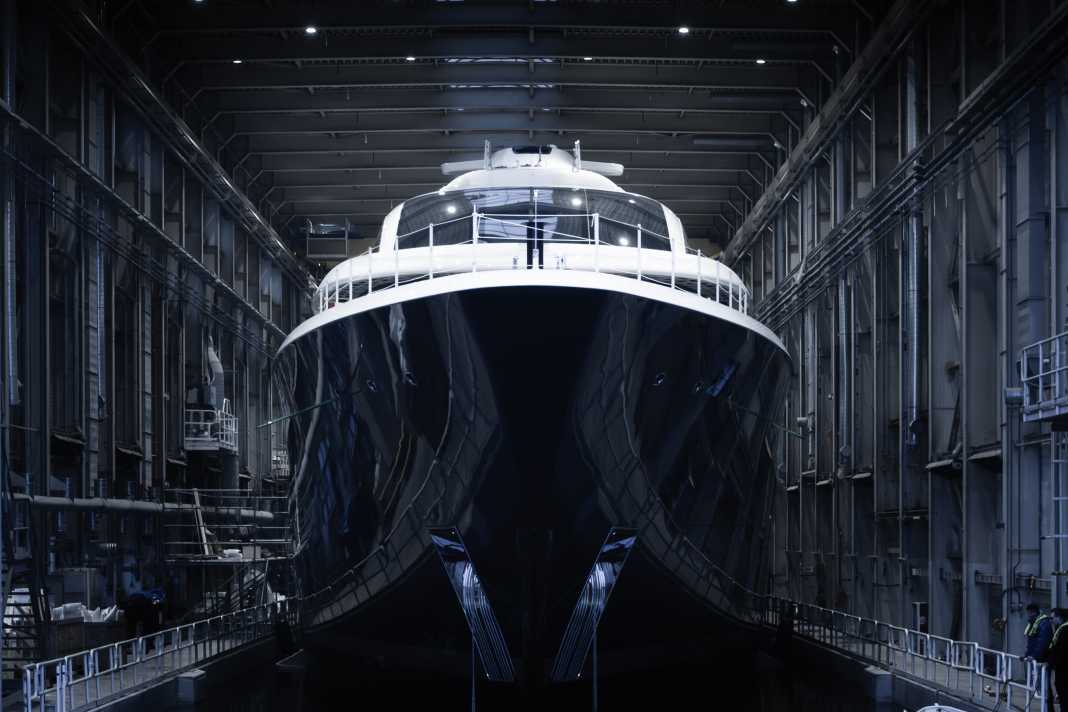



In yacht design, there are trends that flare up as quickly as they fade away. One constant in the creative business with curves and edges is ever larger glass surfaces in the hull and superstructure. For Project 714 Feadship, the British RWD studio came up with particularly large - and highly curved - panes in the streamlined superstructure of the top deck. The three-dimensional glass is complemented by glass strips in the hull. The larger the panes, the more likely it is that they will also have to bear structural loads.
Feadship has a soft spot for glass
Close coordination with the designers is important, not least because large areas of laminated glass are more important in the superstructures than aluminium. The designers are sounding out the feasibility of floating glass houses. With De Voogt Naval Architects, Feadship has the advantage of operating an in-house office. The engineers have already challenged RWD with "Breakthrough" out. Feadship caused a sensation in 2012 with "Venus"which Apple founder Steve Jobs commissioned before his death and did not live to see completed. GL Yachtverglasung installed a total of 400 square metres of glass on board the 78-metre yacht.
Propeller nacelles for Feadship 714
De Voogt carried out computer-aided flow analyses (CFD) to fine-tune the nacelles and propellers, minimise vibrations and maximise comfort on board. The two pod drives also eliminate the need for additional rudders and stern thrusters and improve hydrodynamics. Consumption efficiency results from variable-speed generators that always supply the electric motors with the amount of energy required. The diesel-electric hybrid drive system will also have batteries. However, Project 714 first needs to be finalised, followed by sea trials from the Amsterdam site.
Technical data project 714
- Material: Steel, aluminium
- Length over everything: 79,95 m
- Width: 13,57 m
- Depth: 3,85 m
- Fuel: 240.000 l
- Water: 70.000 l
- Construction: Feadship De Voogt Naval Architects
- Exterior design: RWD
